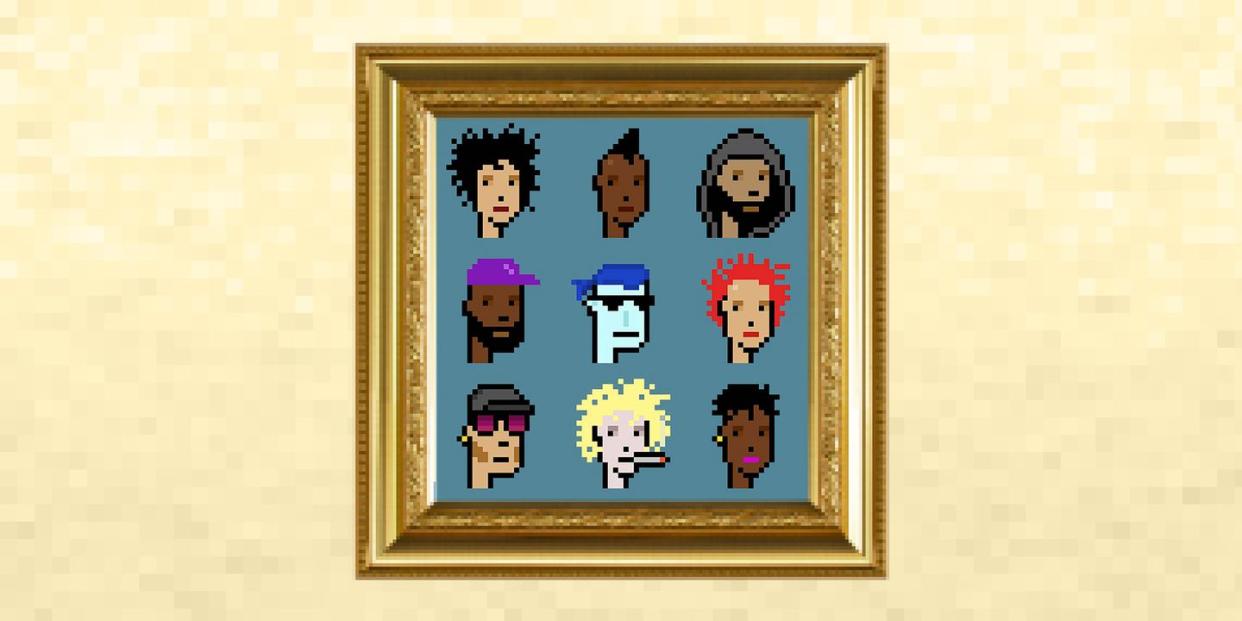So You Bought an NFT... But How Do You Frame It?

- Oops!Something went wrong.Please try again later.
As Beeple basked in the aftermath of the $69.3 million auction of Everydays: The First 5000 Days at Christie’s, he had more on his mind than his newfound riches: He needed a frame.
After all, as the new frontier of NFTs— non-fungible tokens, which are artworks or collectibles that are certified on a blockchain, a permanent digital ledger—opens up, collectors are going to need a place to put them, and an ornate gilt rectangle simply won’t cut it. Mike Winkelmann (Beeple’s real name) won’t reveal what this new hardware might look like, but he has hinted that it will be unlike any frame we’ve seen before.
Today most NFTs are viewed online, as not all artists give permission for them to be printed into physical art. “This way the content can mature with technology. Unlike a physical work of art, it isn’t confined to one form, so it can be displayed differently decades from now,” says Meghan Doyle, a Christie’s contemporary art specialist. For example, Beeple’s Everydays is purely digital, which means its owner, crypto-investor Vignesh Sundaresan, can never print it to hang above his mantel (unless of course that mantel is in his virtual mansion).
But as more artists enter the digital cloud and the market stabilizes, this will change. “It’s like the beginning of Amazon, cryptocurrency, or even photography,” says gallerist Dominique Lévy. “I think [the NFT market] is going to cleanse itself of the madness quickly and evolve into something more meaningful. It has a fabulous creative energy.”
Those artists will still want their work to live in the real world. John Gerrard, for example, created an NFT of his famous Western Flag simulation as well as a video sequence and a still to go with it. “Even I would prefer to have a painting over a JPEG,” says Rachel Rossin, a multimedia artist who was the New Museum’s first virtual reality fellow. “But what makes NFTs interesting is that you can put them wherever you like: on a large screen or a small one, you can have a dedicated computer for your virtual reality pieces, you can build a screen wall for it. Experiment—doing what brings you delight is the point of collecting anything.”
NFTs can be viewed on any screen, from a computer to a TV— or, in the near future, maybe even your refrigerator—but serious collectors won’t want to behold their latest acquisitions as they reach for the milk. “We are seeing more and more screens enter people’s homes, and we probably aren’t far away from seeing rooms with a screen as a wall,” says Joe Saavedra, founder and CEO of Infinite Objects, which prints and frames NFTs, including Beeple’s pieces, in specially crafted displays. “Digital art can be used in those spaces, but we wanted to elevate it in a permanent way, as you might an oil painting or other piece of art.”
Frames are on the way, whether as fantastical one-off creations like Maarten Baas’s clocks or in minimalist settings, like David Hockney’s iPad drawings. Will they replace trusty paint and canvas? No, but we wouldn’t be surprised if art collectors’ walls start sporting a bespoke digital frame or two. For now, watch this space.
This story appears in the Summer 2021 issue of Town & Country.
SUBSCRIBE NOW
You Might Also Like

